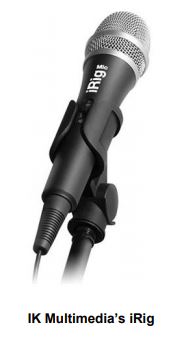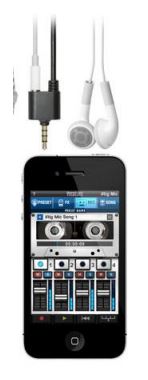Analyzing the Alternatives

[March 2012] Our series on “micro-studios” continues, with the goal of comparing new consumer equipment with existing and newer professional broadcast equipment.
The intent of this series is to focus on quickly delivering broadcasting content from remote sites to a station, studio, or remote vehicle via a variety of transmission methods.
In order to achieve that goal, we want to take a look at portable recording and equipment configurations not only with standard professional gear but also other solutions based upon consumer equipment to see how such configurations could be optimized, taking into consideration budget, ROI, longevity through a depreciation cycle, and more.
We are very fortunate to have several BDR reader contributions that have helped steer the column to achieve greater value to broadcast engineers and those with both limited and – for the purpose of assembling one or more micro-studios – larger budgets.
Our most recent installment included two added elements not originally intended: a look at metering, and a deeper level of detail regarding the engineering quality of the equipment that might not have been dug deep enough into otherwise. The discussion of clipping, peak limiting and the like might have just been assumed within a composite description of “record levels.” Not anymore. Thank you for your participation and feedback – The BDR is what it is thanks to you.
A Word About Our Objective
Why are we starting with consumer gear?
Counter-intuitively, it is to prevent you from commit your budget to buy some products that are just cheaper, but will cost you more in the long run in terms of quality issues (specifications), ease of use, repairs (endurance), and lost airtime.
So, before running out to buy something we mention in any specific article, stop for a moment and read about the alternatives, exploring whether or not it makes good business sense to acquire a particular piece of equipment that – on the surface – seems like a “good deal.” We will also look at the traditional broadcast alternatives as we go.
The plan then is to talk about various products in detail, then make recommendations for what makes the most business sense to do as a process. For example, if a consumer microphone tests well, we will go even further, and look into the cost/benefit analysis that may or may not include replacing or augmenting what you are using now.
As part of that analysis, we will comment on the manufacturers who have supported us as broadcasters for years, establishing themselves as highly-reputable, highly supportive businesses. Often they have developed time-tested, hardened equipment that was created from the ground up to serve the requirements and demands of our industry.
These providers of proven broadcast business solutions are ready to help advise you as to best way to accomplish your needs. Many of them can be found right here among the advertisers on The BDR, so you can research the products, specifications, make an educated decision with your budget, and put the products to work delivering programming back to the studio.
In the end though, please make sure you have the best equipment available for the use, balancing performance, cost, and durability. And remember: the best solution for me may not be the best solution for you.
Microphones
First, let us take a look at the heart of remote studio acquisitions, the microphone.
On the broadcast side, there are a number of really good solutions available for consideration, from the well-known ElectroVoice, Sennheiser, and Shure lines, among others. There are dynamics, some of which have been said are tough enough to hammer nails, and condenser microphones, which require power of some kind and are generally considered to be more delicate.
In fact, in the past it generally was thought that condenser microphones were too delicate to be used in the field. However, surface-mounted electret-condenser microphones have been used in electronic devices for some time – from cassette recorders to cell phones – and there were some concerns around quality until recently.
Today, there are entire news pieces being assembled in the field by reporters who are using the built-in microphone of their mobile devices, and consider it to be “good enough.” Frankly, good enough may get you by when you are off-the-clock and you stumble onto a story, but we can do so much better.
iRig
A good place for us to begin is with IK Multimedia, which has a line of products originally targeted toward musicians called iRig.
Originally geared toward iOS devices, including iPhones, iPads and iPods, the hand-held iRig Microphone has a rugged metal body that is road-ready and can deliver high-quality crisp, clean vocal reproduction – even with the widest range of volume dynamics.

This microphone features a highly unidirectional condenser-electret microphone capsule with a three-position gain switch that configures the microphone for use as a close-up microphone, a microphone for more than one person, or a microphone that essentially covers a whole room.
While the iRig Mic is designed for the singer, vocalist and songwriter on the move, it also works well for recording news sound, interviews, instruments, performances, or other sound sources in the studio, on stage, or in the field.
The microphone plug is hardwired to the cord, which is hardwired to the microphone, rather than being able to disconnect. Its familiar form will allow you to mount it on any microphone stand leaving your device free for operating your favorite app.

The dual mini-jack connector plug features what appears to be a pass-through jack. This enables real-time monitoring of the recording and playback through headphones without having to remove the microphone plug to share the single iPad or iPhone throughput jack.
As iOS-based device, the iRig can be used with free associated apps from iTunes.
The free apps include a mixer with faders which facilitates recordings using iRig Microphone. A paid option extends the functionality of the free app with the ability to add additional channels (up to 4-channel production capability is available):
- VocaLive, a real time effects processor suite.
- iRig Recorder, for quick audio recording and processing.
- AmpliTube.
- iRig Mic also works with a wide variety of other vocal and audio processing apps for the iOS platform.
How does the iRig perform in actual use? What is the frequency response like? How durable is it? And are the results truly “broadcast quality?” We will answer those questions next time.
– – –
Mark Shander, a computer show host and syndicator, is based in Phoenix, AZ. You can contact him at mark@shander.com
